Reflectors for heated towel rails
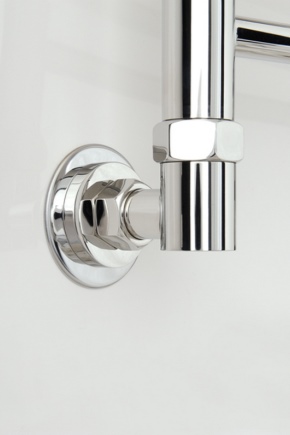
Heated towel rail reflectors with an outer size of 4 "and larger will hide the transitions between the wall and the dryer. They look beautiful and give the bathroom a finished look. One-piece and split reflector suitable for connections with diameters of 32 mm and 40 mm, 45 and 50 mm and others.
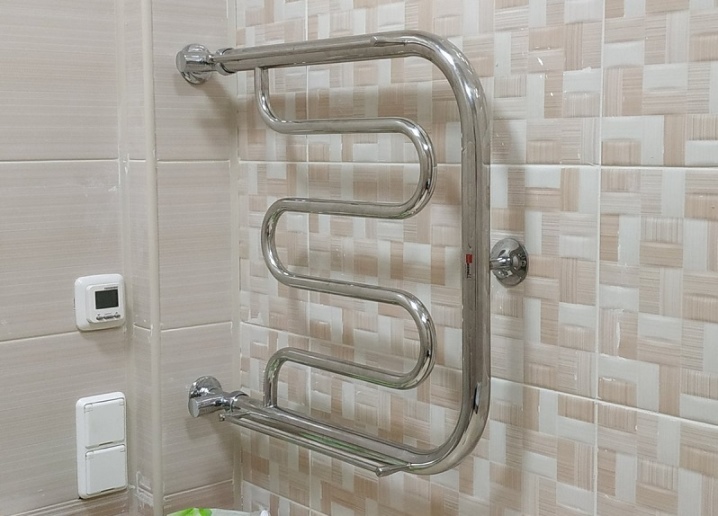
What it is?
The heated towel rail regulates the microclimate in the bathroom, dries linen, clothes and towels. It is a hollow tube with hot water flowing inside it. It connects to pipes that are built into the wall.
Therefore, a transition is formed at the point where the pipe exits the wall. It spoils the appearance of the room. It can be covered with cement or sealant, but there is a more effective solution - install a reflector.
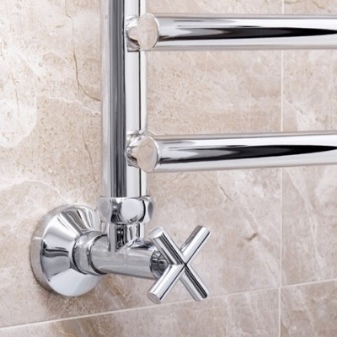
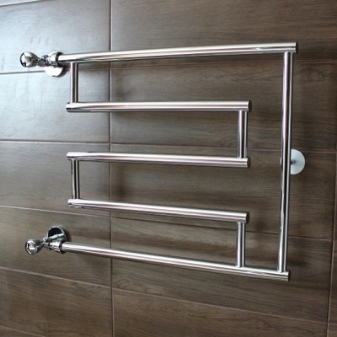
A reflector for a water heated towel rail is a decorative strip that is put on the connecting nipple and solves several problems.
- Decorates the room. Reflectors will hide sloppy plumbing connections that stand out strongly against the background of the tiles.
- Unloads fittings. When the sturdy pad is pressed firmly against the wall, there is another point of support for the dryer. It will be more reliable and will hold up large and heavy towels.
- Protects the connection. Dryer mounting threads will not rust from constant exposure to moisture, therefore, the possibility of leakage is excluded.
So reflectors have a lot of useful qualities. Their range is very wide, and they are suitable for all models of heated towel rails. Let's talk about the varieties.

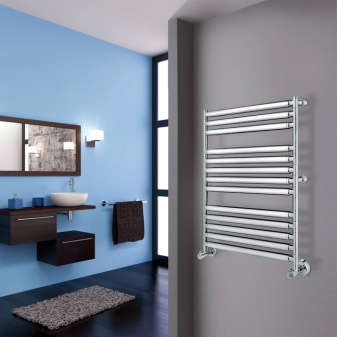
Varieties
Reflectors are often included with dryers. But they may not fit into the bathroom interior or fit on the fixtures. Then the cups need to be bought separately, but first check out their types.
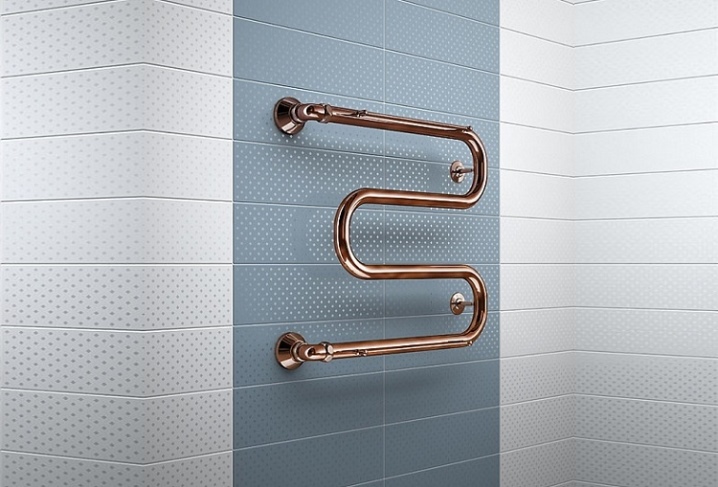
The main difference is construction.
- One-piece models are a ring that is put on the dryer prior to installation. Such views are also called deep, because their place of contact with the wall is elongated by several centimeters. It can be difficult to place them. Due to the large overhang, it is difficult to reach the dryer mounting nut with a wrench, because the housing interferes with the installation. But if you do everything right, you get a beautiful and durable connection.
- Telescopic ones allow you to adjust the height of the cup. The disadvantage is that the price of such models is twice that of simple one-piece models. The adjustment range is quite wide - 15-20 mm. Therefore, such flanges are the best way to hide installation flaws. For example, using magnifiers, you can visually smooth out uneven walls.
- Detachable ones are used for purely decorative purposes. They are kept from opening by a latch. The disadvantage is that you have to hide the slot, because it is clearly visible on the shiny reflectors. Turn it against the wall, if possible. But such models are very easy to install. Collapsible products are bought more often, because for little money you can create a unique design of the room. Just play with the shapes of the reflectors.
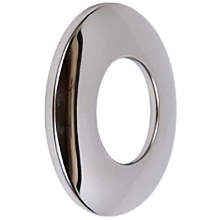
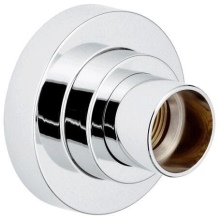
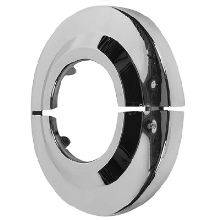
Reflectors in shape are:
- standard round;
- oval;
- square.
The latter are well suited for modern interiors, they naturally look against the background of tiles and new models of plumbing.
But the round ones do not give up their positions, they are universal and are found everywhere.
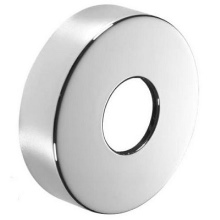
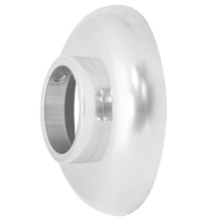
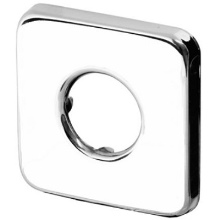
And that is not all. Decorative cups come in flat cylindrical and cone-shaped. It's time to look for the perfect option. Moreover, they differ in material.
- Plastic. They are easy to put on and take off and are the cheapest option.Products tolerate household chemicals well, but the surface is quickly covered with scratches and paint peels off. Even cheaper models can deform from temperature and smell unpleasant.
- Zinc. They are a little more expensive, but they are devoid of these drawbacks.
- Steel chrome plated or nickel plated. They resist heat better, but do not tolerate cleaning well. After several cleanings, the surface becomes cloudy, scratches and abrasions appear. They can also rust.
- Made of stainless steel. They are not afraid of corrosion, they serve 15 years or more. They resist well with household chemicals. They can also be adjusted to fit by sawing off the bottom. The appearance will not be affected by this.
- Bronze, brass, copper. They are installed on elite equipment, a set of reflectors costs more than 3,000 rubles. Not surprisingly, bronze is an expensive metal, medals are made from it.
If shiny models don't work for you, choose reflectors in discreet black or bright white. Everything is up to you.
The main thing is that the sizes fit.
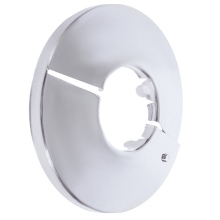

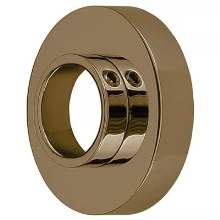
Dimensions (edit)
The connecting diameter of the pad depends on the size of the pipes on which the heated towel rail is attached:
- for 0.5 inch pipes, the inner diameter of the reflector should be 1.9 cm;
- for 3/4 '' - 25 mm;
- for 1 inch tubes - 32 mm (these tubes are the most common);
- for 1 1/4 '' (1.25``) - 40 mm;
- there are other sizes - 45 mm, 50 mm and more.
The overlays should completely hide the transitions between the wall and the heated towel rail. Therefore, it is better to choose reflectors with a large diameter.
But this does not always work, because the design will become visually cumbersome.
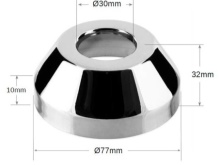
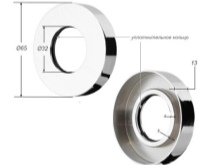
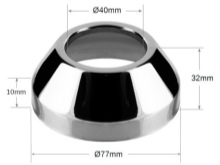
The outer dimensions of the reflectors are:
- 45 mm;
- 50 mm;
- 55 mm;
- 60 mm;
- 70 mm or more.
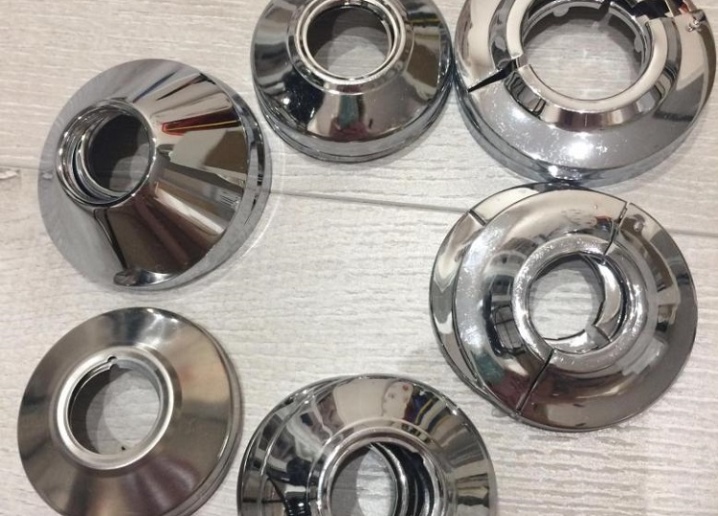
The outer diameter has a purely decorative function and does not play a large practical role. As opposed to thickness.
- The decorative cup must completely cover the thread that connects the dryer.
- At the same time, in some models of heated towel rails, the distance from the wall to the bend is only 4-6 cm.Therefore, problems may arise with the installation, especially if it is one-piece.
If problems arise, the height of the pad can be reduced. To do this, cut off its lower part with a hacksaw and process the cut with sandpaper. This can only be done with bronze and stainless reflectors.
And in order not to suffer so much, it is better to immediately choose a suitable model.
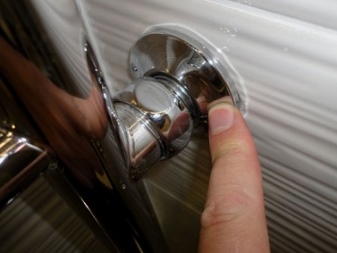

Choice
When buying, pay attention to a few points.
- The most important thing is that the pad should fit snugly on the pipe. Only then will it have protective functions, and the connection will be sealed. For this purpose, some reflectors have a rubber ring inside.
- Pay attention to the weight of the flange. Quality towel rail reflectors have thick walls. If the product is light, then the strength is reduced. It won't last long.
- Choose a material. Steel is stronger than zinc and the cup will serve as an additional fulcrum. Plastic is purely decorative and cheap, but such covers will have to be changed every year. They bend with temperature.
Choose the color and shape of the linings to your taste.
And pay more attention to the design, because one-piece and split reflectors are installed in different ways.
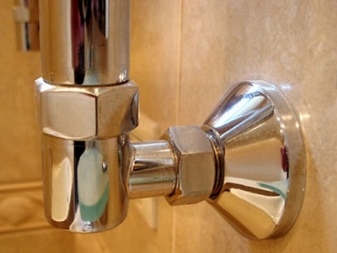
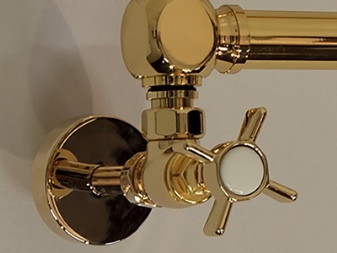
Installation
The old one-piece reflectors must be removed before installation. In order not to remove the entire heated towel rail, work according to this technique.
- Apply a thick grease to the tubes, use a screwdriver to move the old pads to a comfortable position.
- Cover the loose parts of the tubing with rags or rubber pads. Old bicycle cameras will do.
- Saw the old cup with a metal saw or dremel. When less than 1 mm of wall thickness remains, try breaking it. If it doesn't work, keep cutting. You may need to make 2 diametrically opposed cuts.
- Dismantle the old part.
Close the gaps between the wall and the water outlet connections before installing the new reflector.This can be done with cement mortar, putty or sealant.
Don't worry about aesthetics, these places will hide decorative elements anyway.
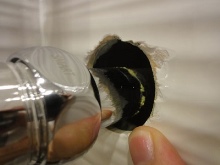
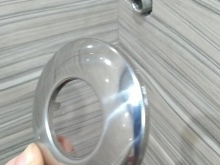
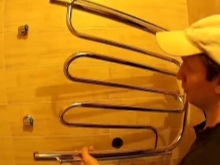
The easiest way is to install split cups. It doesn't even need tools. Or as a last resort you will need a flat screwdriver.
Work in this order.
- Spread the ends of the overlay to the sides. The distance should be enough for the reflector to slide over the pipe. But do not bend it too far, otherwise the part will crack.
- Slide the flange onto the pipe. Do not release the retainer, otherwise the edges of the flange will scratch the surface of the fittings.
- While holding the reflector open, slide it against the wall.
- Then release the part. If it is in the correct position, secure the latch until it clicks into place. This may require a screwdriver.
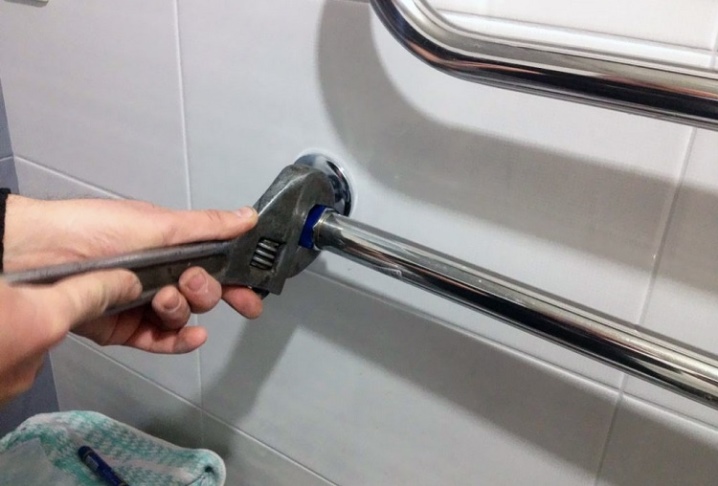
It is more difficult to install solid reflectors. They are placed on the heated towel rail before installation and will interfere with the installation.
- Apply a layer of thick grease to the outlet pipes of the dryer. This is to prevent scratches when moving the reflector.
- Slide the cups up to the curve of the heated towel rail. Install the device.
- Then slide the pads to the working position. Remove the grease with a clean, soft cloth. But be careful - the hard fibers will damage the coating of the tubes.
In the future, it will be difficult to change such reflectors, because you will have to remove the heated towel rail. However, you can always supply split models.
The bathroom now has a complete appearance. It remains only to keep this beauty clean.
Wipe your reflectors regularly with a clean, dry cloth to keep them looking beautiful for years to come.
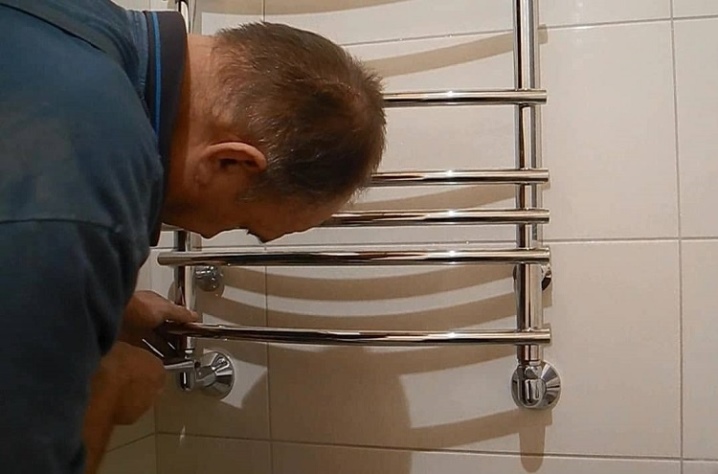













The comment was sent successfully.